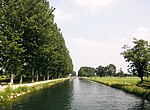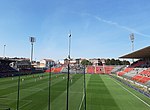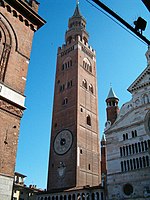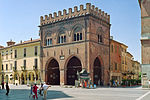Roman Catholic Diocese of Cremona
Dioceses established in the 4th centuryProvince of BergamoProvince of CremonaProvince of MantuaRoman Catholic dioceses in Lombardy

The Diocese of Cremona (Latin: Dioecesis Cremonensis) is a Latin Church ecclesiastical territory or diocese of the Catholic Church in northern Italy. It is a suffragan diocese in the ecclesiastical province of the metropolitan Archdiocese of Milan. The bishop of Cremona's cathedra is in the Cathedral of the Assumption of the Virgin Mary. As of 2008, the Diocese of Cremona had 223 parishes, all located within the region of Lombardy, and the majority (174) within the Province of Cremona, besides 28 in the Province of Mantua, 17 in the Province of Bergamo, and 4 in the Province of Milan.
Excerpt from the Wikipedia article Roman Catholic Diocese of Cremona (License: CC BY-SA 3.0, Authors, Images).Roman Catholic Diocese of Cremona
Piazza IV Novembre, Cremona Giordano
Geographical coordinates (GPS) Address Phone number Nearby Places Show on map
Geographical coordinates (GPS)
| Latitude | Longitude |
|---|---|
| N 45.1333 ° | E 10.0333 ° |
Address
Lloyds Farmacia Comunale N.6
Piazza IV Novembre 2
26100 Cremona, Giordano
Lombardy, Italy
Open on Google Maps









